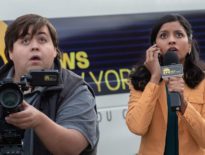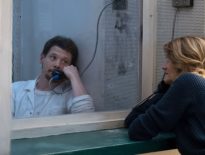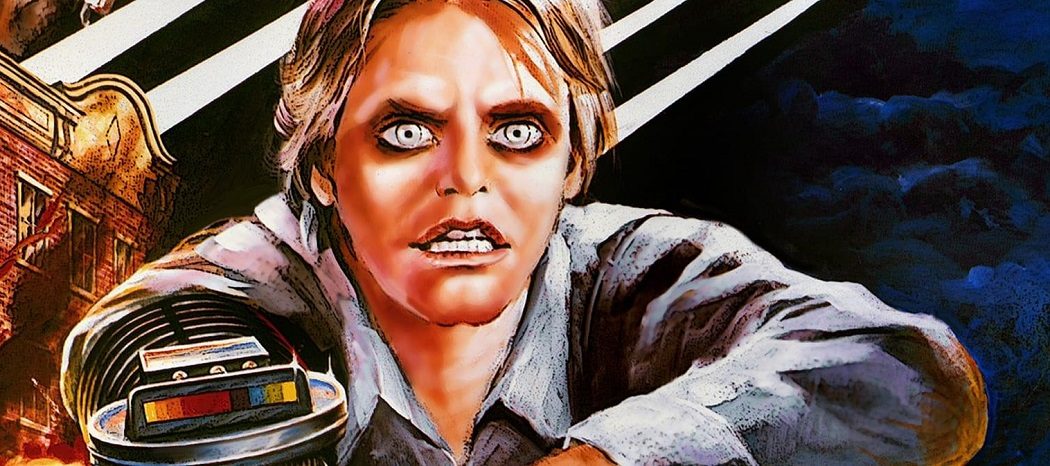
Cinema Fearité presents 'Laserblast'
In the post-'Star Wars' world, some sci-fi movies are good, and some are bad. And some are 'Laserblast.'
Science fiction movie history can be neatly divided into two groups: pre-Star Wars and post-Star Wars. In the immediate aftermath of George Lucas’ groundbreaking (and blockbusting) phenomenon, production companies everywhere scrambled to capitalize on the space opera trend. And many of these hastily-strewn-together movies were pretty bad. This is where Laserblast enters the picture.
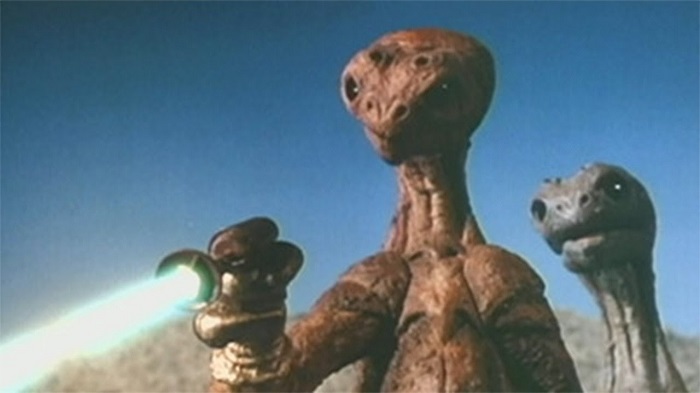
Laserblast begins with a pair of reptilian aliens chasing a humanoid alien through a desert on Earth. They catch and kill him, and as he is being disintegrated, he drops his laser gun and the necklace that allows the user to use it. A teenager named Billy Duncan (Corvette Summer’s Kim Milford) finds the gun, along with the amulet that transforms him into a zombie-like killer whenever he puts it on. Billy uses his newfound weapon to exact revenge on the people in town who have bullied and tormented him and his girlfriend, Kathy (Cheryl Smith from The Incredible Melting Man). As Billy has fun destroying things with his new toy, his antics attract the attention of a mysterious special agent named Tony Craig (Gianni Russo from The Godfather), as well as that of the aliens who hunted the gun’s original owner.
In the pantheon of low budget film producers, Charles Band (Tourist Trap, TerrorVision) is right up there with Roger Corman and William Castle. And he is the man behind Laserblast. Seizing the opportunity to cash in on the late seventies sci-fi trend, Band enlisted the help of director Michael Rae (Aliens Gone Wild) to bring to life the ramshackle screenplay by Frank Ray Perilli (Alligator) and Franne Schacht (Fairy Tales). It’s a thin narrative with a ton of plot problems, but it has a lot of fun blowing things up. It knows what it does best and does it, and because of this, Laserblast is the very definition of a “so bad it’s good” movie. It puts the ‘blast’ in Laserblast.
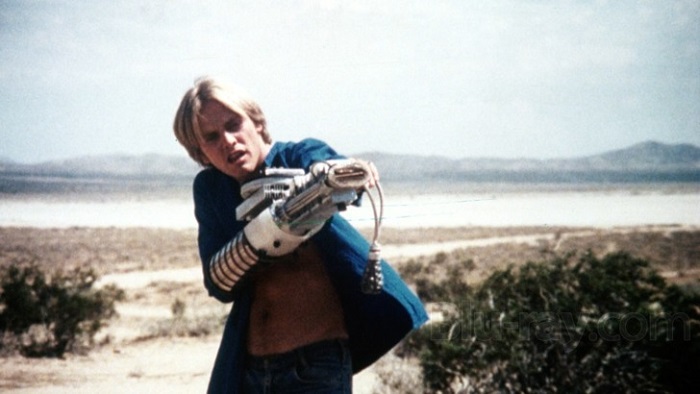
For its visual effects, Laserblast takes several pages right out of the Star Wars playbook, only working on a much smaller scale with them. For example, the aliens that are constantly hunting the owner of the gun are cool Claymation creations by animator David Allen (Q, The Crater Lake Monster) that look like they’ve stepped right off of the Millennium Falcon’s battle chess board. The titular laser blasts are also simple-yet-effective post-production tricks from effects man Paul Gentry (The Stuff, The Dark Half). And the alien spaceship is a miniature model designed by Gregory Jein (Close Encounters of the Third Kind, Star Trek: The Motion Picture) that was green-screened in wherever it was needed. Laserblast didn’t have the same budget as Star Wars, but it had the same creative spirit.
Laserblast treats its Star Wars influence almost as a joke. Besides the aliens, lasers, and spaceships, the movie contains several references to its big brother. At one point, a nerdy kid trying to explain Billy’s laser gun attack to the police describes it as “a flying saucer,” noting his expertise because he’s “seen Star Wars five times!” The (non-existent) rivalry is stoked even further when Billy aims his laser gun at a roadside billboard for Star Wars and fires away, blowing the advertisement sky high. Plot-wise, Laserblast is as far from Star Wars as you can get while still being considered a sci-fi flick. But it still wears its influence like a badge, giving the gatekeeper a wink and a nudge every chance it gets.
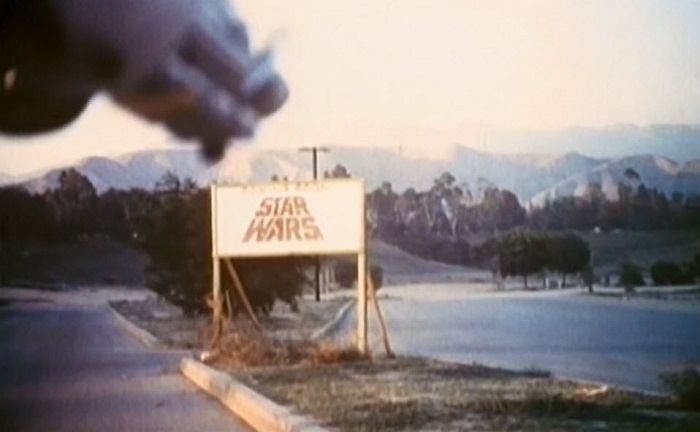
Because it takes place on Earth, and because the laser gun is of an otherworldly power, there’s plenty of cool explosions and fire in Laserblast. Pyrotechnician Harry Woolman (Evilspeak, The Unseen) earned his money, with every blast from the laser gun ending in a flame-reaching, smoke-spewing detonation. A big hunk of the film’s budget probably also went to stunt drivers Wally Crowder (Furious 7, Monster Trucks) and Larry Dunn (The Gumball Rally, Grease), because there are more than a few great car races and wrecks in there, too. Apparently, there were no stuntmen available for the fight scenes, because the actors awkwardly slap and tickle their way through them themselves, but luckily, those moments are few and far between. Most of the action in Laserblast comes in the form of cars blowing up.
Laserblast represents the film scoring debut of both Richard Band (Charles’ brother who scored many of Band’s productions, including Ragewar and Puppetmasters) and Joel Goldsmith (son of legendary composer Jerry Goldsmith and scorer of classics like Man’s Best Friend and The Rift). The music is mostly synthy sci-fi stuff with a hint of a horror vibe that shifts into a softer piano-and-string ballady sound now and again. It’s memorable, albeit a bit repetitive. The music in Laserblast is more interesting from a historical perspective than it is a musical one, given the future works of the two composers.
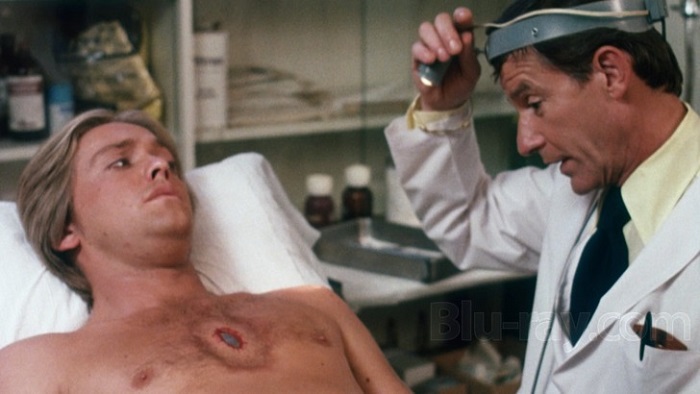
There’s another aspect of Laserblast that is of interest. While most of the actors in the movie are relative unknowns, there is one hugely familiar face. Amidst the bumbling cops, annoying teenagers, and absentee parents, there’s Roddy McDowall from Planet of the Apes and Class of 1984. He plays a doctor that Billy sees about the rash/wound that the amulet leaves on his chest, and while it’s a miniscule part, it’s still cool to see a veteran thespian doing his thing amongst the children.
As far as science fiction cinema goes, no movie franchise has been as influential or as lucrative as that of Star Wars. And most likely, none will be ever again. But all that influence opened the floodgates for a ton of great movies. And a ton of bad ones. And even a few that fall into both categories. Like Laserblast.
